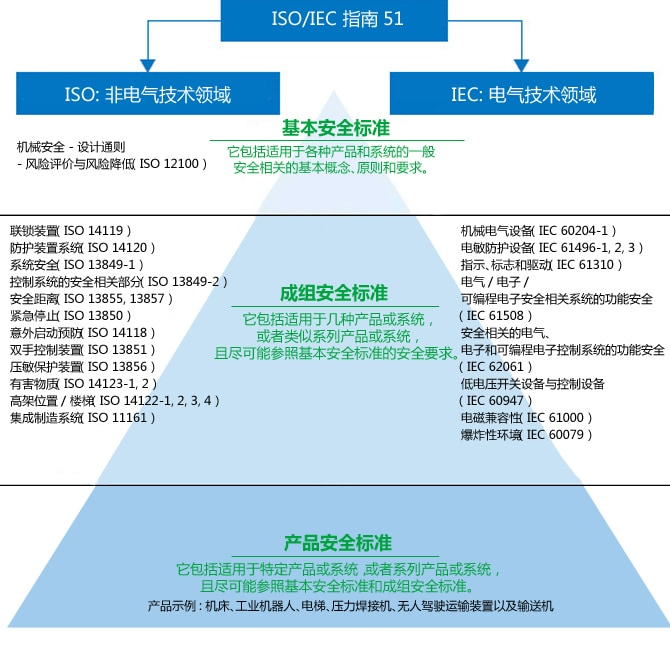International Standards for Machinery Safety
We cannot guarantee that an ISO or IEC standard has been developed for a given machine. Practically speaking, it is impossible to meet the requirements of product update standards because of the rapid development of products. Therefore, ISO and IEC standards are divided into various levels (according to ISO/IEC Guide 51), and by combining these standards, support for the latest machines can be provided.
International Standard for Safety of Machinery, ISO/IEC Standard

ISO
International Organization for Standardization. ISO was established in 1947 as a standardization body specializing in non-electrical technical fields. Its headquarters are in Geneva, Switzerland. Some of the best known ISO standards include ISO 9001: Quality Management System and ISO 14001: Environmental Management System.
IEC
International Electrotechnical Commission. Founded in 1908, IEC is a standardization body specializing in electrical and electronic technology, headquartered in Geneva, Switzerland.
Main safety standards
ISO/IEC Guide 51
This guide provides requirements and recommendations for standards drafters to include safety aspects in standards.
It applies to safety aspects related to people, property, the environment, or a combination thereof. The definition of "safe" in this document means freedom from intolerable risks.
ISO 12100
Basic safety standards for machinery safety, which specify the principles of risk assessment and risk reduction (eg, the 3-step method), which can help designers achieve safety goals in machinery design. The 3-step approach is a risk reduction procedure that includes 1) intrinsically safe design measures, 2) safeguards and/or supplementary safeguards, and 3) usage information. In 2010, the previous basic standards (ISO 12100-1: 2003 and ISO 12100-2: 2003) were incorporated into ISO 12100: 2010 without any technical changes.
ISO 13849-1
This safety standard provides safety requirements and guidance for the design and integration principles of safety-related parts of control systems.
This standard defines a performance level (PL), which is an independent level specifying the functions of the safety-related parts of a control system that perform safety functions.
ISO 14121-1
This safety standard provides general principles aimed at achieving the risk reduction objectives identified in ISO 12100-1:2003.
In 2010, this standard was also incorporated into ISO 12100:2010 without any technical changes.
IEC 60204-1
This safety standard applies to electrical, electronic, programmable electronic equipment and systems for machines that cannot be carried by hand during work, including a group of machines that work in a coordinated manner.




